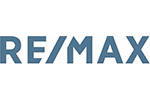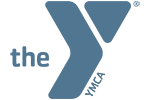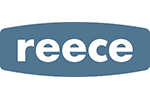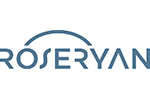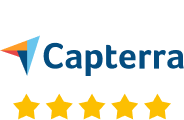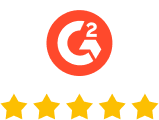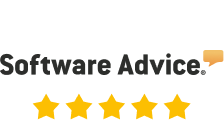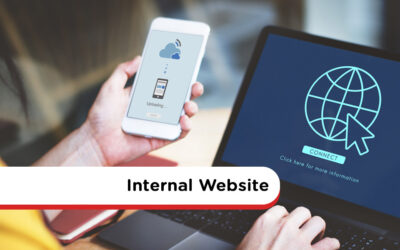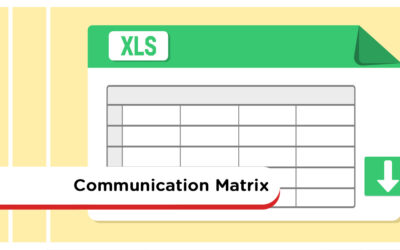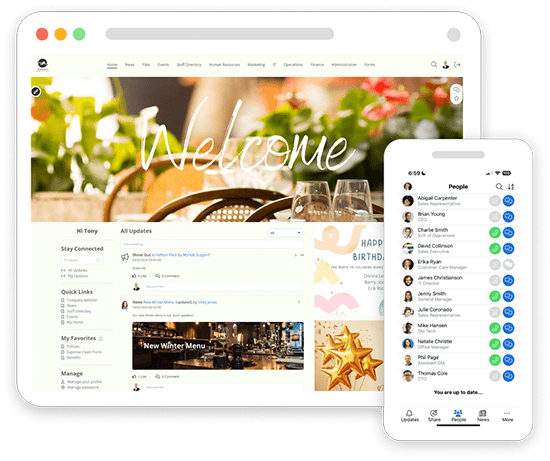
Instant access to important information
Finding and accessing information today should be a breeze, but in many cases, it’s not. Your team will be wasting time looking for files and searching outdated content to complete their jobs. Intranets were supposed to solve this problem, but they’re difficult to maintain and keep up to date.
Enter MyHub. MyHub is an intranet platform designed to help your team connect to content, knowledge, and each other. Imagine a modern intranet with built-in tools to keep everybody updated and productive.
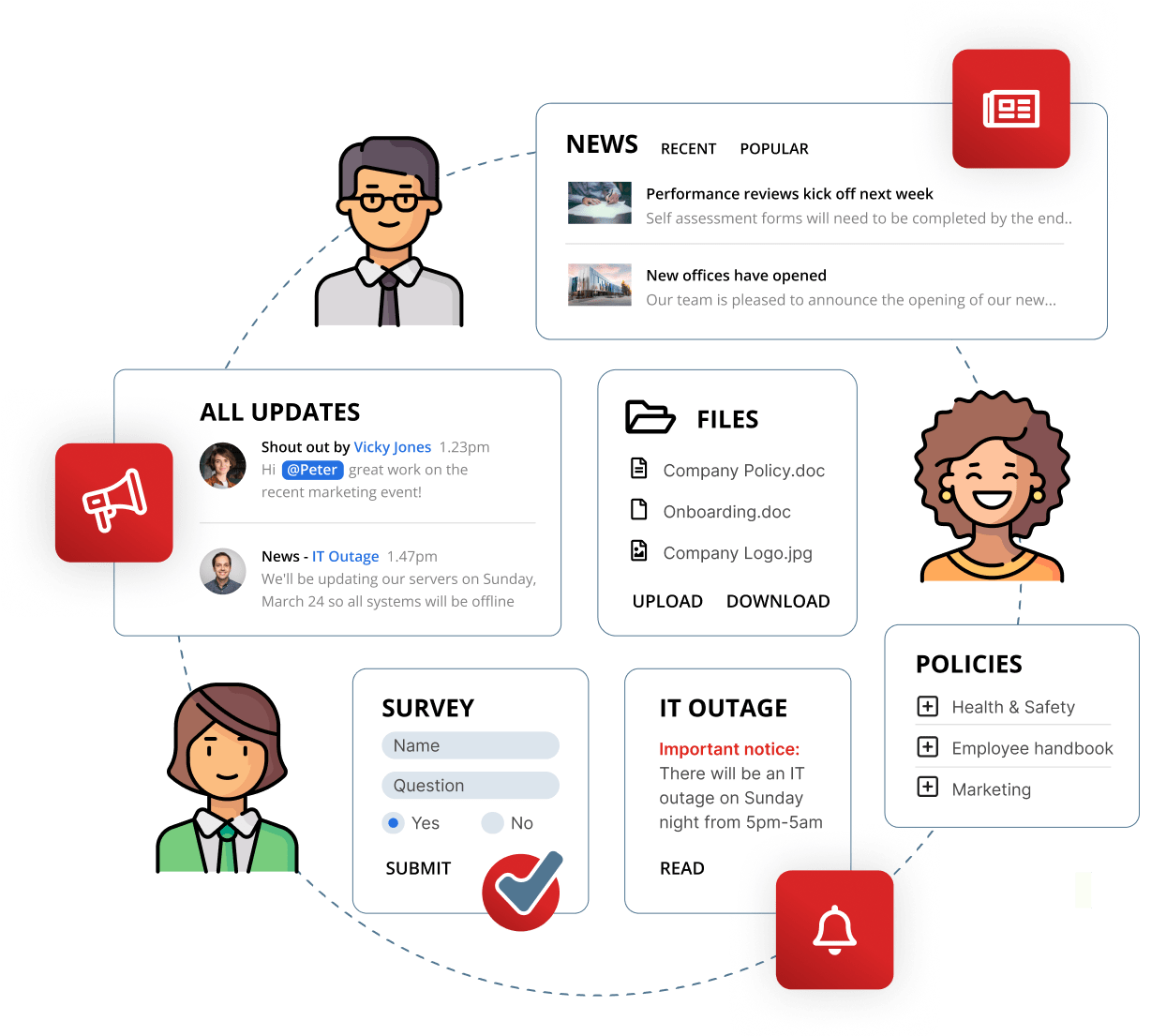
Benefits at a glance
Publish information quickly and easily
Find documents in no time at all
Transform your intranet with integration
Streamline your workflow and reduce administrative tasks with our integrations. Easily connect to your everyday apps and manage users effortlessly from your intranet. Explore now >
One place to access critical information

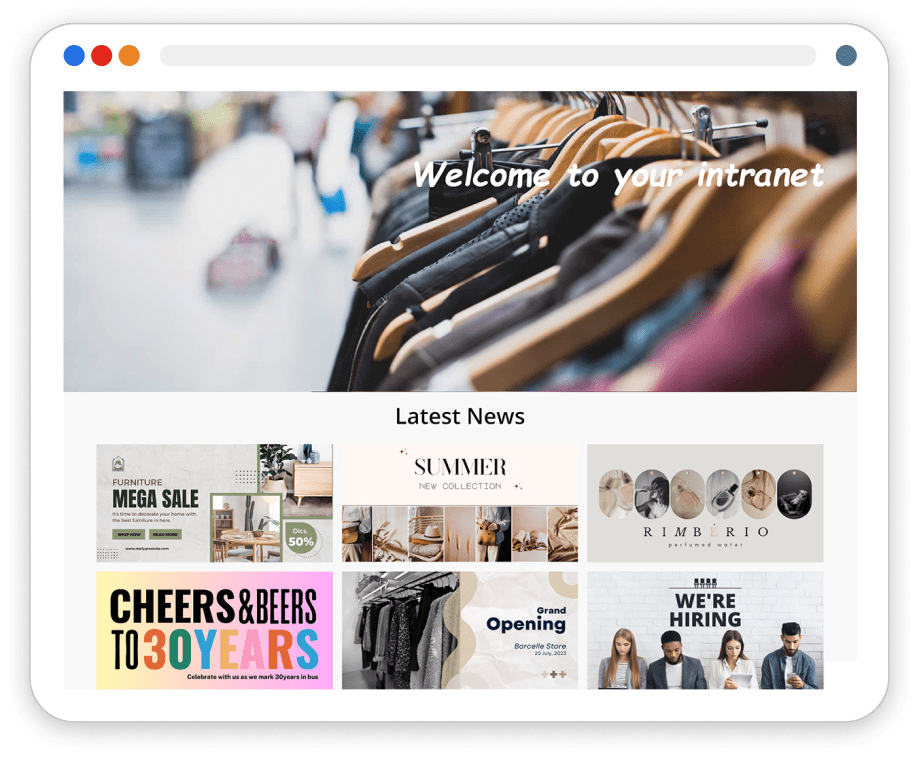
Create an intuitive and beautiful intranet
Delivering a beautiful functioning intranet is now easier with MyHub’s integration with Canva. Images and designs sourced from Canva can be used alongside other content types, from PDFs to videos, to enhance your intranet’s appeal.
Simplify the publishing and sharing of critical information while making your intranet visually stunning.
Book a demo today to discover how effortless it is to create an intranet you’ll be proud of.

Best Western are now more productive than ever
Quick and easy access to your intranet in your pocket
The most essential employees in any business are the ones on the road, often doing the ‘real’ work. So giving these team members information at the right time can materially move productivity. That’s where our mobile app comes in.
Not everybody has a desk job, but they have a mobile device. So when your team needs quick access to information, wherever they are, our mobile app is the first place to go.
The mobile app will enhance how your team works, giving a seamless experience across all devices and providing employees with the same level of access, whether in the office or out and about.
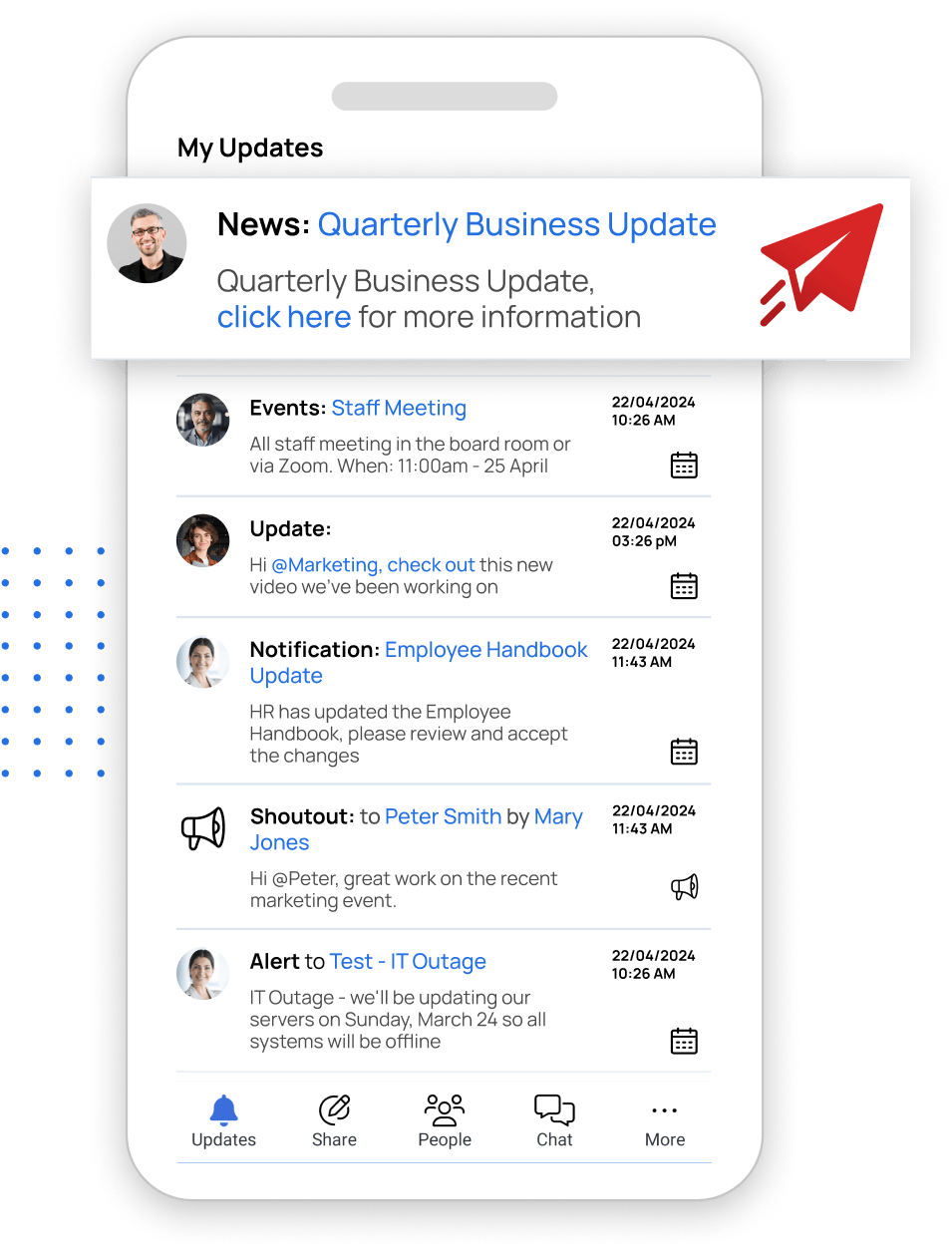
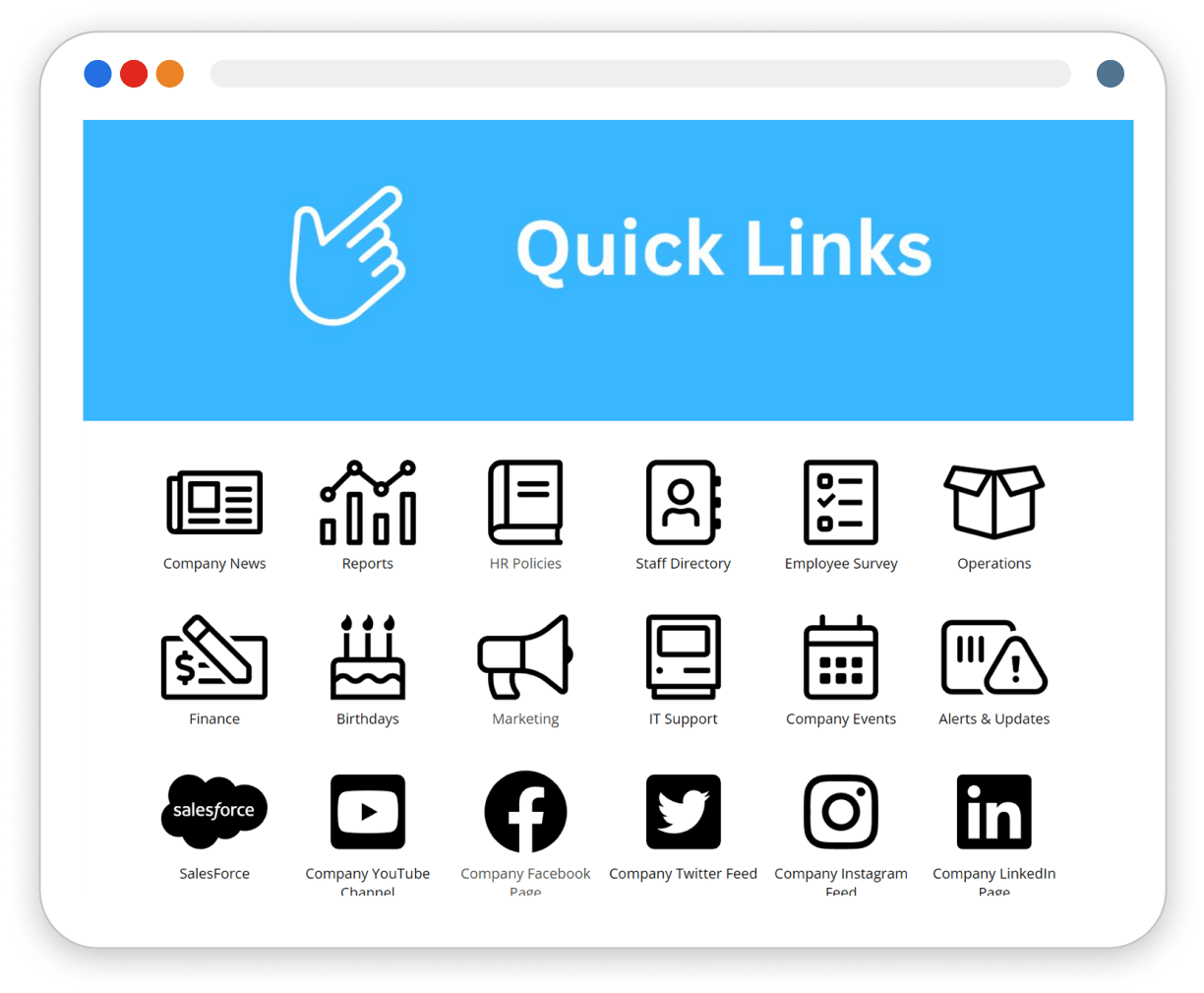
Some interesting articles you may like…
145 Digital Transformation Statistics You Need To Know
Digital transformation (DX) remains central to business strategy, especially post-pandemic. Organizations worldwide are rapidly increasing DX initiatives—97% of IT decision-makers are involved, and spending is projected to rise from $1.8 T in 2022 to $2.8 T by 2025. Despite this focus, most IT budgets (50–72%) still go toward maintenance rather than innovation, prompting rebalancing concerns.
Today, more than 90% of companies are undertaking DX projects and 87% of executives consider it a priority, yet only 44% feel prepared for disruption. Key drivers include operational efficiency (40%), faster time-to-market (36%), and improved customer experience (35%). However, DX failures often stem from employee resistance, lack of ROI clarity, and digital skills gaps—making cultural and human factors as critical as technology.
Looking ahead, DX trends point to continued investment—forecasted at 18% CAGR through 2030—with increased focus on hybrid work, AI, cloud, IoT, and employee experience platforms . Digital transformation is reshaping organizational structures, workflows, and customer interactions, making data-driven planning essential for staying competitive.
Team Celebration: The How, What, And Why
Celebrating team successes shouldn’t be reserved only for major milestones like big deals or record-breaking figures. According to the article, recognizing even small wins—such as completing a project or positive customer feedback—can have a powerful ripple effect by enhancing employee retention, productivity, and overall morale. Organizations are encouraged to make recognition a consistent part of their culture to reinforce positive behaviors and foster pride.
The guide outlines when to celebrate—such as first wins, project completions, role changes, or employee anniversaries—and how to do it creatively across different work environments. It offers practical ideas: in-person team outings, award ceremonies, meeting shout-outs, virtual lunches, care packages, and digital timelines. This ensures celebrations are relevant whether your team is in-office, remote, or hybrid
The post also addresses the importance of balancing public and private recognition. While team-wide shout-outs build unity, personal acknowledgments—like handwritten notes or one-on-one feedback—resonate deeply. Finally, it warns against misuse: avoid over-celebration, ensure equity, consider sensitivity (e.g., budget cuts), and follow up beyond one-off events . Together, these practices build a positive, inclusive celebration culture that benefits both people and the organization.
Knowledge Transfer Process In Six Simple Steps
The blog introduces a straightforward six-step knowledge transfer process designed to help organizations capture, share, and retain both explicit and tacit expertise. Given the risk of valuable knowledge walking out the door—especially with retiring baby boomers—the guide emphasizes using structured templates and intranet tools to save time, reduce errors, and improve compliance.
Each step builds on the last: Identify and prioritize critical knowledge, collect and organize it via forms and templates, share through intranet forums and newsfeeds, update regularly with workflows, apply through mentoring and quizzes, and finally, create new knowledge to perpetuate the cycle. Throughout, MyHub tools are showcased—surveys, feedback modules, document hubs, approval workflows—to make each phase seamless and scalable
These practices lead to better continuity (protecting operations when staff depart), efficiency, reduced errors, and a more innovative, collaborative culture. The included knowledge transfer template makes it easy to get started and promote a more resilient, knowledge-rich workplace.
Internal Website: Uses, Features And Setup
A modern internal website—also known as an intranet—is a secure, employee-only platform that centralizes everything staff need: company news, documents, tools, and applications. Unlike external sites, intranets often suffer from outdated content and poor navigation, yet play a pivotal role in internal communications, information sharing, and teamwork
This guide outlines how intranets enhance information management, featuring integrated search, cloud document libraries, and a central hub to streamline access and eliminate inefficient shared drives. It also improves internal communication via interactive news feeds, blogs, and surveys—especially crucial for hybrid or remote workforces . Beyond communication, intranets support collaboration and automated workflows, enabling real-time document co-editing, team forums, and form-based process automation for tasks like leave requests, approvals, and reporting .
To roll out an effective internal website, the blog recommends evaluating three build options—DIY, off-the-shelf tools, or cloud-based intranet software. It emphasizes essential features: intuitive setup, mobile responsiveness, high usability, cost effectiveness, and ready-to-go deployment. Templated cloud intranets stand out for quick deployment, mobile optimization, single sign-on, and user familiarity
Communication Matrix: A Step By Step Guide With Free Template
A communication matrix is a strategic tool designed to organize and streamline internal communications across projects, teams, and the whole organization by mapping content, audience, frequency, channel, and ownership into a clear, one-page framework. Especially valuable for hybrid and remote environments, it helps teams decide what to communicate, when, to whom, and through which medium—making sure nobody is left out or overwhelmed .
The guide dives into the essential components—content, purpose, frequency, audience, deliverables, channels, and owners—and explains how these elements work together to make communication purposeful and consistent. It emphasizes using a simple tool like Excel or Google Sheets for easy setup and live collaboration.
The article also outlines key benefits: faster decision-making, higher transparency, optimized resource use, better collaboration, and adaptability to change. With included real-world examples—a monthly newsletter and project-team matrix—and a free download link, it shows how quick and impactful implementing this tool can be.
55 Questions To Ask A CEO
High engagement levels across organizations have made CEOs more accessible than ever—appearing in town halls, online Q&As, and casual hallway chats. This increased visibility means employees now have rare face-to-face time with top leadership. To make the most of such moments, the blog emphasizes the importance of preparation: thoughtful, well-targeted questions help you stand out, build rapport, and even elevate your career.
The post categorizes 55 insightful questions into key themes: corporate culture, company goals, operations, CEO career path, personal interests, and ways to make the right impression. From probing culture with “What three words best describe our company?” to gaining personal insight via “What motivates you when things get tough?”, each question is framed for specific formats—town halls, small group settings, or one-on-one conversations.
To round it out, the article offers top tips to guide your approach: be prepared with a few select questions, match the tone to the forum, offer your own thoughts when it’s intimate, and above all, remain genuinely enthusiastic. Done right, this isn’t just a chat—it’s an opportunity to connect, learn, and make a positive, lasting impression.
Collaborative Communication: Why It Matters
In today’s dynamic business environment, traditional hierarchical structures are giving way to more collaborative and flexible models. With the rise of remote work and diverse teams, effective communication has become the cornerstone of successful collaboration. By uniting individuals across various departments and locations, organizations can harness a wealth of ideas and perspectives, leading to innovative solutions and enhanced problem-solving capabilities.
Central to this collaborative effort is the role of communication. It’s not just about sharing information but about fostering an environment of openness, trust, and mutual respect. Providing diverse communication channels—such as instant messaging, video conferencing, and collaborative platforms—ensures that all team members are aligned and engaged, regardless of their physical location. This approach not only facilitates seamless information flow but also strengthens team cohesion and morale.
Moreover, investing in robust communication strategies has tangible business benefits. Organizations that prioritize collaborative communication experience increased productivity, faster decision-making, and a more agile response to market changes. As businesses continue to adapt to evolving work dynamics, embracing collaborative communication is essential for sustained growth and competitive advantage.
How To Build Trust In A Team: 10 Proven Strategies That Work
Building trust within teams isn’t a one-time event—it’s a continuous process rooted in consistent behaviors. The blog outlines ten proven strategies to cultivate trust: clear communication, giving autonomy, celebrating successes, and more. These insights draw on best practices that create an environment where team members feel safe to take risks and contribute authentically.
Key strategies include fostering transparency by sharing both successes and challenges openly, and embracing accountability by ensuring commitments are honored. Leaders play a pivotal role by modeling reliability and integrity—walking the talk—and by establishing clear processes that remove ambiguity and reduce micromanagement
The post also emphasizes the importance of social connection and shared experiences. Whether through informal gatherings or team-building exercises, these moments build rapport and reinforce mutual support. Recognizing individual and collective achievements further cements bonds, elevating team morale and performance .
CSR and Corporate Citizenship: What Every SME Needs To Know
Corporate citizenship, or CSR, is no longer a mere checkbox—it’s a powerful strategy that strengthens brand reputation, attracts socially conscious consumers, and enhances employee retention. Far from being exclusive to large corporations, SMEs can embrace impactful initiatives that contribute meaningfully to society and the environment.
The article outlines five accessible CSR areas every SME can explore: environmental projects like cutting energy use and reducing waste; philanthropic efforts such as donations and volunteering; ethical labor practices, including inclusivity, fair pay, and accessibility; community volunteering; and employee well-being programs like flexible working and health-focused perks. These diverse initiatives allow businesses of any scale to demonstrate genuine social responsibility.
A forward-thinking CSR strategy also aligns with broader trends—greater supply chain scrutiny, transparency to avoid greenwashing, mandated CSR reporting, and alignment with UN Sustainable Development Goals. By tracking and sharing concrete progress—such as emissions, volunteering hours, or donations—SMEs can build trust and credibility. Even small, consistent steps can position a business as a valued and responsible corporate citizen.

